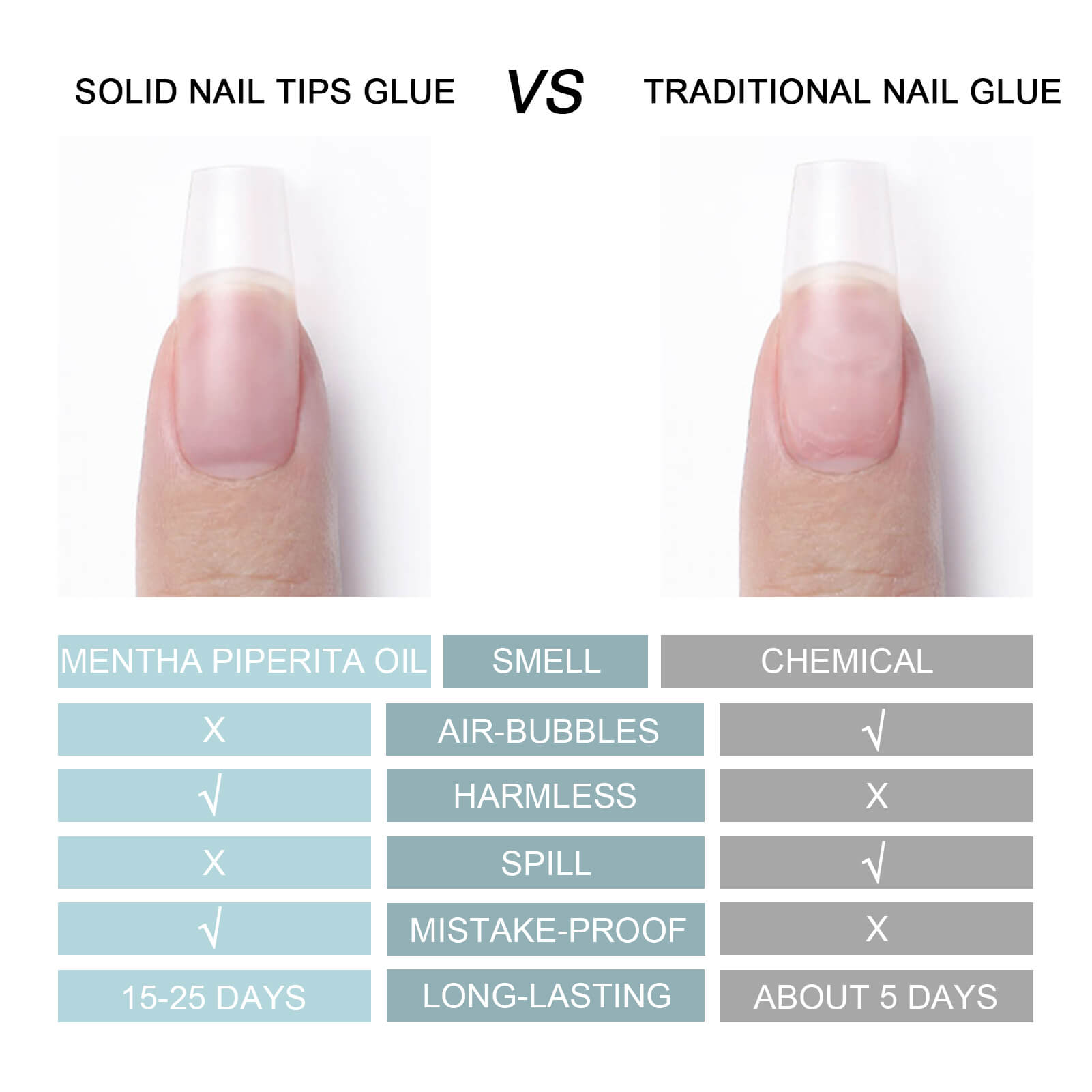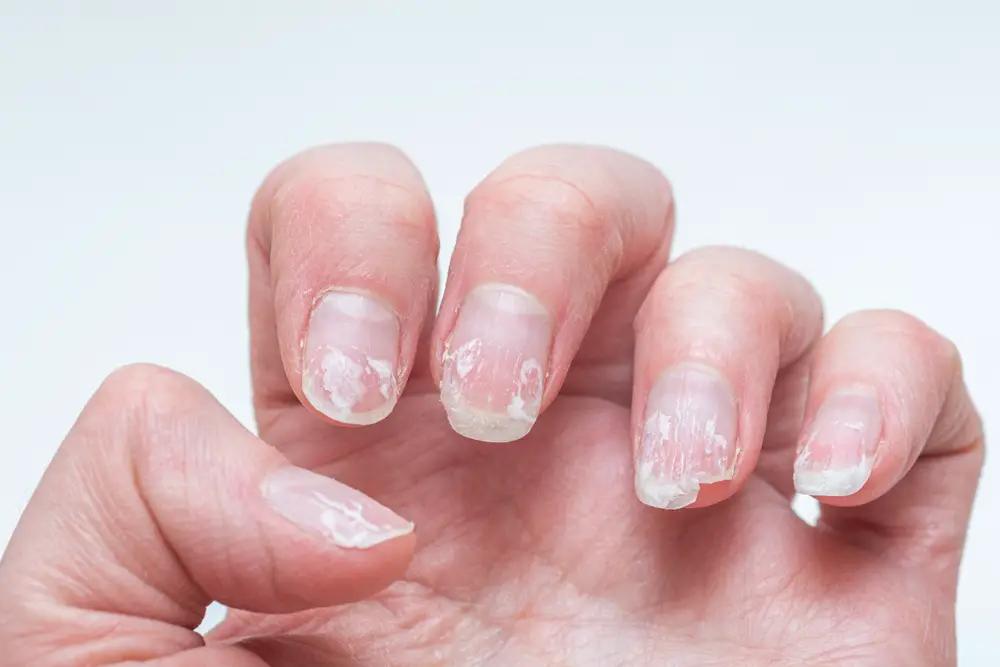Nail glue can damage nails if used incorrectly. It is essential to follow proper application guidelines.
Using nail glue incorrectly can lead to nail damage, weakening, and potential infections. Understanding the correct way to use nail glue is crucial for maintaining healthy nails. It is important to be mindful of the potential risks and take the necessary precautions to protect your nails.
By using nail glue responsibly, you can enjoy beautiful nail enhancements without causing harm to your natural nails. Let’s explore the impact of nail glue on nail health and how to mitigate any potential damage.

Contents
The Basics Of Nail Glue
Nail glue can damage nails if not applied correctly or if used too frequently. It is important to follow the instructions carefully and not overuse the glue to prevent weakening or breaking of the nails. Proper application and removal techniques are also crucial to minimize any potential damage.
What Is Nail Glue?
Nail glue is a common product used in the nail care industry. It is a type of adhesive that is specifically designed for bonding artificial nails, such as acrylic or gel nails, to the natural nails.
Nail glue is known for its strong bonding properties, allowing the artificial nails to stay in place for an extended period. It is usually sold in small bottles with a brush applicator, making it easy to apply.
Common Ingredients
Nail glue typically contains a combination of ingredients that contribute to its adhesive properties. While the exact formulation may vary between brands, there are some common ingredients you can expect to find:
1. Ethyl Cyanoacrylate: This is the primary ingredient in nail glue and is responsible for its strong bonding capabilities. Ethyl cyanoacrylate is a fast-acting adhesive that forms a durable bond when it comes into contact with moisture.
2. Polymethyl Methacrylate (PMMA): PMMA is often added to nail glue to enhance its strength and durability. It helps to reinforce the bond and prevent the artificial nails from lifting or breaking.
3. BHA (Butylated Hydroxyanisole): BHA is an antioxidant that is commonly used in nail glue to prolong its shelf life. It helps to prevent the glue from deteriorating over time, ensuring its effectiveness for longer periods.
4. Hydroquinone: Hydroquinone is another ingredient that is often found in nail glue. It acts as a stabilizer, preventing the glue from discoloring or degrading when exposed to light or heat. It’s important to note that some individuals may be sensitive or allergic to certain ingredients in nail glue.
If you experience any adverse reactions, such as redness, swelling, or irritation, it is recommended to discontinue use and consult a healthcare professional. In conclusion, nail glue is a powerful adhesive that is specifically designed for attaching artificial nails to the natural nails.
It contains ingredients like ethyl cyanoacrylate, PMMA, BHA, and hydroquinone, which contribute to its bonding properties and shelf life. While nail glue is generally safe to use, it’s essential to be aware of any potential allergies or sensitivities to its ingredients.
Myths Surrounding Nail Glue
Weakening The Nails
Nail glue does not weaken the nails when used correctly and removed properly.
Causing Infections
Properly applied nail glue does not cause infections; it is safe when used according to instructions.
Irreversible Damage
Nail glue damage is reversible with proper care and maintenance of your nails.
Scientific Perspective On Nail Health
The scientific perspective on nail health provides valuable insights into the structure and growth of nails, as well as the effects of chemicals on nail health.
Understanding these aspects is essential for maintaining strong and healthy nails, especially when considering the use of nail glue and its potential impact on nail health.
Nail Structure And Growth
The nail is composed of several layers, including the nail plate, nail bed, and cuticle. The nail plate is primarily made of a protein called keratin, which gives nails their strength and resilience.
The nail bed is the tissue beneath the nail plate, and it plays a crucial role in nail growth. Nails grow as a result of new cells forming in the nail matrix, which is located beneath the cuticle.
Effects Of Chemicals On Nails
Chemicals found in nail products, including nail glue, can potentially impact the health of nails. Harsh chemicals may lead to nail damage, weakening the structure of the nails and causing them to become brittle.
Additionally, frequent exposure to such chemicals can affect the overall health and appearance of the nails, making them more susceptible to breakage and other issues.
Comparing Nail Glues And Alternatives
When it comes to nail enhancements, it’s important to understand the impact of different products on the health of your nails. Let’s compare nail glue with popular alternatives like acrylics and gel to determine their effects on nail health.
Nail Glue Vs. Acrylics
Acrylic nails are created by combining a liquid monomer with a powder polymer to form a durable layer on the natural nail. In contrast, nail glue is a quick and easy way to attach artificial nails or repair natural nails.
Nail Glue Vs. Gel
Gel nails offer a glossy and natural look, cured under UV light to harden. Nail glue, on the other hand, provides instant adhesion without the need for curing time, making it a convenient option for nail applications.
Safe Application Of Nail Glue
Nail glue is a popular product used to attach artificial nails or repair broken nails. However, improper application can lead to damage and weaken the natural nails.
To ensure a safe and effective application of nail glue, it is important to follow proper techniques and minimize any potential damage.
Proper Application Techniques
When applying nail glue, it is crucial to follow these proper techniques:
- Start by preparing your natural nails, ensuring they are clean, dry, and free from any oils or lotions.
- Apply a thin layer of glue on the back of the artificial nail or on the area of the natural nail that needs repair.
- Press the artificial nail or the broken nail firmly onto the natural nail, holding it in place for a few seconds to allow the glue to bond.
- Avoid applying too much glue, as excess glue can seep onto the surrounding skin and cause irritation.
Minimizing Damage
To minimize damage while using nail glue, consider the following:
- Avoid using nail glue too frequently, as it can weaken the natural nails over time.
- Take breaks between applications to allow the nails to breathe and recover.
- If you experience any discomfort or signs of damage, such as nail thinning or brittleness, discontinue the use of nail glue and consult a professional.
- Consider using nail glue alternatives, such as adhesive nail tabs or gel nails, which can provide a more temporary and less damaging solution.
By following these proper application techniques and minimizing potential damage, you can safely use nail glue to enhance the appearance of your nails without compromising their health.
Removing Nail Glue Without Harm
Nail glue removal can be done without causing harm to the nails. Discover effective methods to safely eliminate nail glue and maintain the health of your nails.
Recommended Removal Products
When it comes to removing nail glue, there are a few recommended products that are gentle on your nails. Acetone-based nail polish remover is an effective option, but it can be harsh on your skin and nails.
Instead, try using a non-acetone nail polish remover or a nail glue remover specifically designed for this purpose. These products are less harsh and won’t damage your nails as much.
Step-by-step Guide
Here’s a step-by-step guide on how to remove nail glue without harming your nails:
- First, soak a cotton ball or pad in your chosen nail glue remover or non-acetone nail polish remover.
- Place the soaked cotton ball or pad onto your nail, making sure it covers the entire nail surface and the glue.
- Wrap your finger in aluminum foil or use a nail clip to hold the cotton ball or pad in place.
- Leave it on for about 10-15 minutes to allow the remover to penetrate the glue.
- Remove the aluminum foil or clip, and gently scrape off the softened glue with a cuticle pusher or a wooden stick.
- If there’s still some glue left, repeat the process until all the glue is removed.
- Wash your hands with warm water and mild soap to remove any residue and moisturize your nails and cuticles with a nourishing oil or lotion.
By following this guide, you can remove nail glue without damaging your nails. Just remember to be gentle and patient throughout the process, and avoid using any sharp tools or scraping too hard. With the right products and techniques, you can keep your nails healthy and beautiful.
Repair And Care After Nail Glue
Nail glue can potentially damage nails if not properly applied and removed. It’s crucial to repair and care for nails post-glue usage to prevent any harm or weakening of the nail bed. Regular moisturizing and gentle removal techniques can help maintain healthy nails.
Real Experiences With Nail Glue
Real experiences with nail glue can provide valuable insights into the effects it has on nails. Whether positive or challenging, these experiences can help individuals make informed decisions about using nail glue.
Positive Outcomes
Many individuals have reported strong, long-lasting nail adhesion when using nail glue. This can be particularly beneficial for those who want to maintain their manicure for an extended period of time. Additionally, nail glue can provide added strength to weak or damaged nails, contributing to overall nail health.
Challenges Encountered
Despite its benefits, some users have encountered challenges when using nail glue. These may include damage to the natural nail if the glue is not applied or removed properly.
Furthermore, individuals with sensitive skin may experience irritation or allergic reactions to the ingredients in nail glue.

Frequently Asked Questions
Is Nail Glue Damaging To The Nails?
Yes, nail glue can be damaging to the nails if used improperly. It can cause brittleness and weaken the nails. It’s important to use nail glue sparingly and to follow proper application and removal techniques to minimize damage.
How Do You Use Nail Glue Without Damaging Your Nails?
To use nail glue without damaging your nails, apply a small amount on the nail tip. Avoid contact with skin and cuticles. Use sparingly and remove with acetone.
Are Glue On Nails Worse Than Acrylics?
Glue-on nails are not necessarily worse than acrylics. It depends on individual preferences and needs.
Glue-on nails are temporary and easy to apply, while acrylics are more durable and require professional removal. Choose what suits you best based on your lifestyle and desired outcome.
How Long Is It Safe To Wear Glue On Nails?
It’s safe to wear glue-on nails for up to two weeks. After that, give your nails a break to prevent damage.
Conclusion
After careful consideration, it can be concluded that nail glue does have the potential to damage nails. The chemicals present in the glue can weaken the nails, making them brittle and prone to breakage. However, if used correctly and in moderation, the damage can be minimized.
It is important to prioritize nail health over aesthetics and to always follow proper application and removal techniques. By being mindful of the potential risks and taking necessary precautions, beautiful and healthy nails can be achieved.

